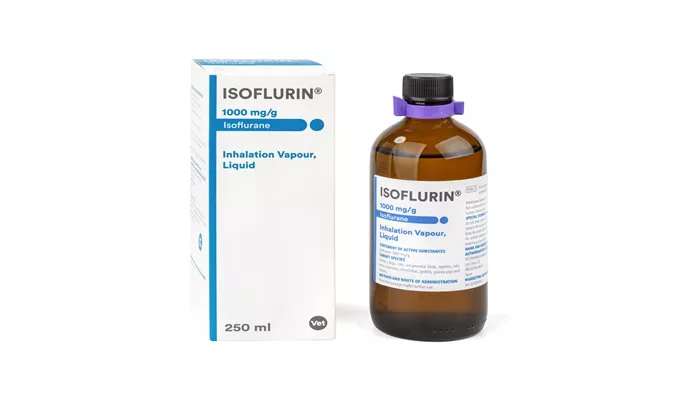The use of anesthetic gases is a critical component of modern anesthesia practice, allowing for the induction and maintenance of general anesthesia during surgical procedures. However, these agents can also have significant effects on the cardiovascular system, including the potential to induce cardiac arrhythmias. Understanding which anesthetic gases are most likely to cause these arrhythmias is essential for anesthesiologists and cardiologists alike, as it enables better patient management and risk mitigation during surgery.
Cardiac arrhythmias can range from benign to life-threatening and may arise due to various factors, including the type of anesthetic used, the patient’s pre-existing conditions, and the surgical environment. This article will explore the anesthetic gases most commonly associated with arrhythmias, detailing their mechanisms of action, clinical implications, and recommendations for safe use.
Anesthetic Gases And Their Cardiovascular Effects
Anesthetic gases can affect cardiac function through several mechanisms, including direct myocardial depression, alterations in autonomic tone, and sensitization of the myocardium to catecholamines. The following anesthetic agents are particularly noteworthy regarding their potential to induce cardiac arrhythmias:
1. Halothane
Halothane was one of the first inhaled anesthetics widely used in clinical practice. While effective in providing anesthesia, it is also known for its significant cardiovascular effects. Halothane can sensitize the myocardium to catecholamines, increasing the risk of arrhythmias, especially in patients with underlying heart disease.
Studies have shown that halothane can lead to bradycardia and hypotension due to its negative inotropic effects on the heart.
SEE ALSO: How to Read Sinus Arrhythmia ECG?
2. Isoflurane
Isoflurane is a commonly used volatile anesthetic that has a relatively favorable safety profile compared to halothane.
However, it can still induce cardiovascular changes such as hypotension and tachycardia. Isoflurane may also sensitize the myocardium to catecholamines, which can precipitate ventricular dysrhythmias when sympathomimetic drugs are administered perioperatively. Its effects on heart rate and blood pressure require careful monitoring during surgery.
3. Sevoflurane
Sevoflurane is often favored for its rapid onset and recovery characteristics. Although it has a lower myocardial depressant effect compared to halothane, higher concentrations of sevoflurane have been associated with significant arrhythmias such as junctional rhythm and isorhythmic atrioventricular dissociation (ISRAVD). These arrhythmias typically resolve upon discontinuation of the agent.
Despite its popularity in both pediatric and adult populations, clinicians must remain vigilant regarding its potential cardiac effects.
4. Desflurane
Desflurane is known for its low solubility in blood and rapid elimination from the body. However, it can cause sympathetic activation leading to reflex tachycardia. Desflurane’s cardiovascular effects are similar to those of isoflurane but may be more pronounced due to its rapid onset1. The agent’s ability to cause vasodilation may also contribute to hypotension in susceptible patients.
5. Nitrous Oxide
While nitrous oxide is often used as an adjunctive agent rather than a primary anesthetic gas, it can still impact cardiovascular stability. Nitrous oxide may increase cerebral blood flow and intracranial pressure but has minimal direct effects on cardiac rhythm compared to volatile agents. Nevertheless, it should be used cautiously in patients with pre-existing cardiovascular conditions.
6. Enflurane
Enflurane has been shown to possess some arrhythmogenic potential, particularly when used in conjunction with adrenergic agents like epinephrine. It may induce premature ventricular contractions (PVCs) under certain conditions.
Although less commonly used today due to the availability of newer agents, awareness of its potential risks remains important.
7. Methoxyflurane
Methoxyflurane is another older inhalational agent that has fallen out of favor due to concerns about nephrotoxicity and its arrhythmogenic potential when combined with catecholamines. Its use should be avoided in patients at higher risk for cardiac complications.
Mechanisms of Arrhythmogenesis
The mechanisms by which anesthetic gases induce arrhythmias are multifaceted:
Myocardial Depression: Many volatile anesthetics exert a negative inotropic effect on cardiac muscle, reducing contractility and potentially leading to bradycardia or hypotension.
Catecholamine Sensitization: Certain agents can sensitize the myocardium to catecholamines, increasing the risk of arrhythmias during periods of sympathetic activation.
Electrolyte Imbalances: Anesthesia can lead to shifts in electrolyte levels (e.g., potassium), which are critical for normal cardiac conduction.
Autonomic Nervous System Modulation: Anesthetic agents can alter autonomic tone, leading to changes in heart rate and rhythm.
Risk Factors for Anesthetic-Induced Arrhythmias
Several patient-specific factors increase the likelihood of developing arrhythmias during anesthesia:
Pre-existing Cardiac Conditions: Patients with a history of heart disease or arrhythmias are at higher risk.
Electrolyte Imbalances: Abnormal potassium or magnesium levels can predispose patients to arrhythmic events.
Concurrent Medications: The use of medications that affect heart rate or rhythm (e.g., beta-blockers) may interact negatively with anesthetic agents.
Surgical Stress: The physiological stress associated with surgery itself can provoke arrhythmias.
Monitoring And Management
Given the potential for anesthetic gases to induce cardiac arrhythmias, careful monitoring is essential during surgery:
Continuous ECG Monitoring: This allows for real-time detection of any rhythm abnormalities.
Blood Pressure Monitoring: Maintaining hemodynamic stability is crucial; hypotension or significant changes in heart rate should prompt immediate intervention.
Electrolyte Monitoring: Regular assessment of electrolyte levels helps mitigate risks associated with imbalances.
In cases where arrhythmias occur:
Discontinuation of Anesthetic Agent: This is often the first step in managing drug-induced arrhythmias.
Pharmacological Interventions: Depending on the type of arrhythmia observed, medications such as beta-blockers or antiarrhythmic agents (e.g., amiodarone) may be indicated.
Fluid Resuscitation: In instances of hypotension or bradycardia, intravenous fluids may help stabilize hemodynamics.
Conclusion
The choice of anesthetic gas plays a crucial role in perioperative cardiovascular management. While modern inhalational agents such as sevoflurane and desflurane offer advantages over older agents like halothane regarding safety profiles, they still carry risks for inducing cardiac arrhythmias. Understanding these risks allows healthcare providers to tailor anesthesia plans effectively while ensuring patient safety through vigilant monitoring and appropriate management strategies.
Related topics:


